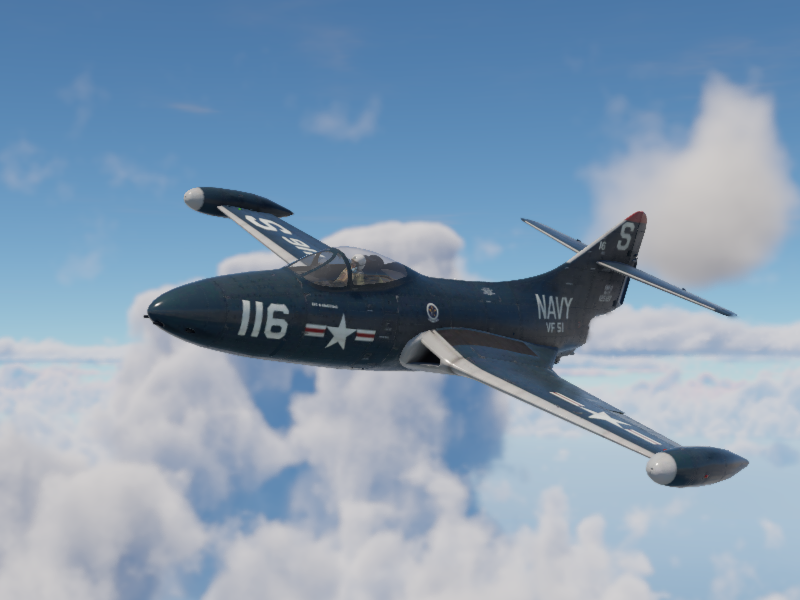
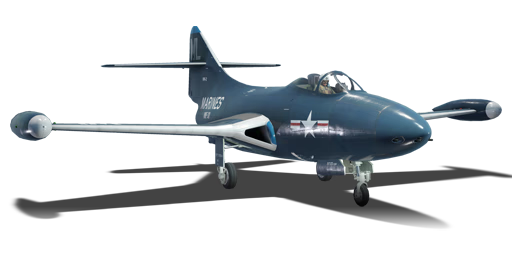


The F9F Panther was born during a time when the jet engine was beginning to make its appearance into service. Grumman began work on the XF9F-1 Prototype that eventually was dropped in favour of the XF9F-2 prototype, Grumman's Model G79, that utilized 1 crew member and eventually a single engine. As the Panther moved along the creation process, items like wingtip fuel tanks were added to increase its range. Carrier trials with the prototypes were completed in March of 1949. The F9F-2 entered US Navy service in May of 1949. The F9F-2 is the first production variant of the Panther. It is powered by a Pratt & Whitney J42-P-8, a license-built version of the Rolls Royce Nene engine.
It was introduced in Update 1.37. The Panther will typically find itself outclassed as it often faces against more advanced jet designs, such as the MiG-15 or Venom. However, it does excel in a support fighter role. Distracted opponents are easy prey when the Panther's high-speed driving and manoeuvrability are applied correctly. When engaged 1 on 1 with other jet fighters, its flaws (low top speed) can be exposed. Defensively, the Panther has an uncanny ability to escape pursuing enemies when using its agility to your advantage. The Panther greatly excels in the fighter-bomber role due to its optional payloads.
flaps
flaps
flaps
brake
| Belt | Belt filling | Armor penetration (mm) at a distance: | |||||
|---|---|---|---|---|---|---|---|
| 10 m | 100 m | 500 m | 1000 m | 1500 m | 2000 m | ||
| HEF-I/AP-T | 36 | 33 | 23 | 15 | 9 | 6 | |
| AP-T/AP-T/HEF-I/HEF-I | 36 | 33 | 23 | 15 | 9 | 6 | |
| HEF-I/HEF-I/HEF-I/AP-T | 36 | 33 | 23 | 15 | 9 | 6 | |
| AP-T/AP-T/AP-T/HEF-I | 36 | 33 | 23 | 15 | 9 | 6 | |
| HEF-I | 5 | 4 | 3 | 2 | 2 | 2 | |
| Name | Weight | Slot | ||||||||
|---|---|---|---|---|---|---|---|---|---|---|
| 62.8 kg | 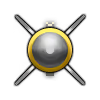 |  |  |  |  |  | ||||
| 49.9 kg |  |  |  |  |  |  |  |  | ||
| 117.9 kg |  |  |  |  |  |  |  |  | ||
| 242.6 kg |  |  |  |  |  |  | ||||
| 534.2 kg | 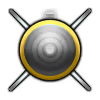 |  | ||||||||
| 500.8 kg | 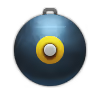 |  | ||||||||












Flight performance | |
|---|---|
Survivability |
|---|
Weaponry | ||
|---|---|---|
